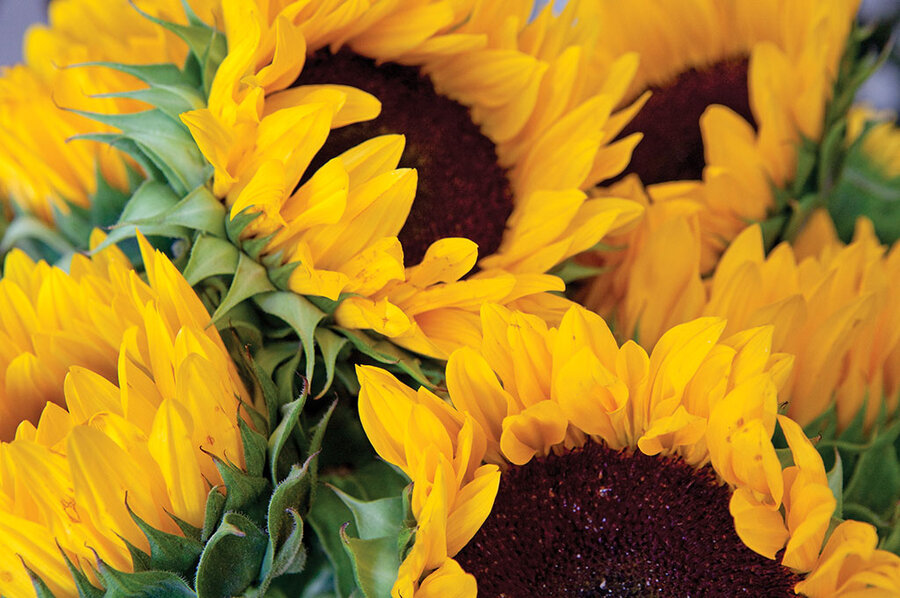State flowers’ dirty little secret
Loading...
Our field, until a farmer cut it recently, was dotted with red clover, Trifolium pratense. In addition to being a good insectary crop (attractive to insects) and green manure, red clover is used for forage and silage.
Oh, yes, it’s also Vermont’s state flower, chosen over “the daisy, trailing arbutus, the posy, mayflower, and the buttercup” in a public vote in 1894.
Of the 50 state flowers, red clover is surely the most modest, a perfect match for Vermonters, who are famous for monosyllabic speech.
Vermonters are protective of their status – anyone not born here is referred to as a “flatlander” – so it’s surprising that our state flower isn’t a native, which is usually defined as a plant growing in North America before colonization. Red clover is indigenous to Europe, Asia, and Africa, not New England.
Most states have chosen native species as their state flowers, but Vermont’s not the only state to pick an exotic, or introduced, plant. In 1919, New Hampshire claimed the purple lilac, Syringa vulgaris, as its state bloom. Common lilacs were early immigrants to North America but are native to Europe.
Indiana went even farther afield and chose the peony, Paeonia lactiflora, in 1957. There are two peonies native to the coastal mountains of North America, but the peony Indiana claims comes from China. (For the record, the peony is Indiana’s fourth state flower, the successor to the carnation, the tulip tree flower, and the zinnia.)
This native/nonnative issue hasn’t raised eyebrows in most states, but Auburn University’s Oneal Smitherman campaigned until his death in 2010 to have the Alabama azalea (Rhododendron alabamense) named the state flower, replacing the Asian-born Camellia japonica. (The camellia was selected in 1959, replacing goldenrod, the original state flower, which many Alabama gardeners considered a weed.)
Five years after Professor Smitherman’s death, Alabama’s state flower is still the camellia, which probably means that Smitherman will be remembered for his monumental work preserving and spreading native azaleas throughout Alabama, and not for changing the state flower.
And it’s a far better legacy than that of the legislators in Utah, who in recent years selected the semiautomatic Browning M1911 as the state gun. That is one of Utah’s more than two dozen symbols, which include a state star (not to be confused with the state astronomical symbol) and state rock (not to be confused with the state gem or state mineral).
Vermont does not have an official state gun, although it would surely be the deer rifle, if put to a vote. But if it will help my state from giving a gun an official seal of approval, I’ll stop complaining about red clover being our state flower, even though it’s a flatlander.
After all, so am I.
State flowers of the U.S.
Alabama: Camellia
Alaska: Forget-me-not
Arizona: Saguaro cactus blossom
Arkansas: Apple blossom
California: California poppy
Colorado: Rocky Mountain
columbine
Connecticut: Mountain laurel
Delaware: Peach blossom
Florida: Orange blossom
Georgia: Cherokee rose
Hawaii: Hawaiian hibiscus
Idaho: Mock orange
Illinois: Purple violet
Indiana: Peony
Iowa: Wild prairie rose
Kansas: Sunflower
Kentucky: Goldenrod
Louisiana: Magnolia
Maine: White pine cone and tassel
Maryland: Black-eyed susan
Massachusetts: Trailing arbutus
Michigan: Apple blossom
Minnesota: Pink and white
lady’s-slipper
Mississippi: Magnolia
Missouri: Hawthorn
Montana: Bitterroot
Nebraska: Goldenrod
Nevada: Sagebrush
New Hampshire: Purple lilac
New Jersey: Violet
New Mexico: Yucca flower
New York: Rose
North Carolina: Flowering dogwood
North Dakota: Wild prairie rose
Ohio: Scarlet carnation
Oklahoma: Oklahoma rose
Oregon: Oregon grape
Pennsylvania: Mountain laurel
Rhode Island: Violet
South Carolina: Yellow jessamine
South Dakota: Pasque flower
Tennessee: Iris
Texas: Bluebonnet
Utah: Sego lily
Vermont: Red clover
Virginia: American dogwood
Washington: Coast rhododendron
West Virginia: Rhododendron
Wisconsin: Wood violet
Wyoming: Indian paintbrush







